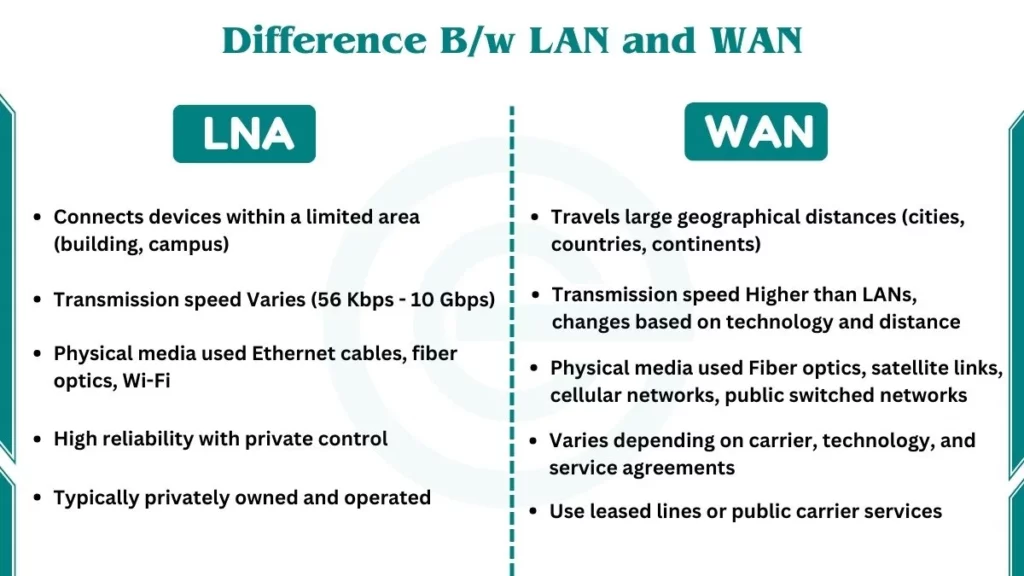LANs prioritize speed and security within confined spaces. This means LANs are designed to connect devices like computers quickly and securely when they are in a small physical area. While WANs focus on connecting geographically spread devices over long distances in cities or countries. WANs use public infrastructure like telephone lines, satellites, and cellular networks to achieve these connections.

WAN vs LAN-Key Difference
| Parameter | Local Area Network (LAN) | Wide Area Network (WAN) |
|---|---|---|
| Geographical reach | Connects devices within a limited area (building, campus) | Travels large geographical distances (cities, countries, continents) |
| Maximum distance covered | Up to 1km (typical) | Virtually unlimited |
| Transmission speed | Varies (56 Kbps – 10 Gbps) | Varies greatly depending on technology (kbps – 100 Gbps+) |
| Typical latency | Low (5-10 milliseconds) | Higher than LANs, changes based on technology and distance |
| Physical media used | Ethernet cables, fiber optics, Wi-Fi | Fiber optics, satellite links, cellular networks, public switched networks, microwave radio relays, undersea cables |
| Cost | Lower setup and operating costs | Higher costs due to larger area coverage |
| Complexity | Simple and uniform structure | More complex due to diverse technologies and protocols |
| Reliability | High reliability with private control | Varies depending on carrier, technology, and service agreements |
| Security | Tight control over security policies | Security depends on various factors like encryption, access controls, and management practices |
| Primary purpose | Resource and information sharing within an organization | Data and application transfer across geographical distances |
| Ownership | Typically privately owned and operated | use leased lines or public carrier services |
| Example technologies | Ethernet, Wi-Fi, Token Ring, FDDI, IEEE 802.11 standards | PPP, ATM, SONET, SDH, 10 Gigabit Ethernet WAN PHY, DWDM, MPLS, BGP, SDN, NFV |


